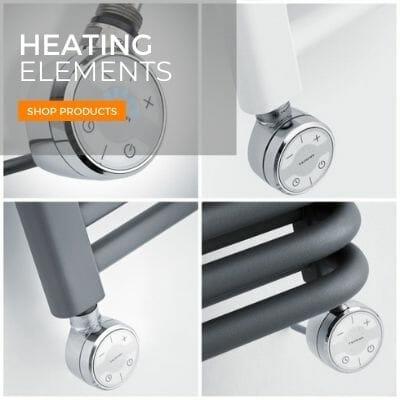So, you are thinking about buying a heating element? Excellent choice.
Whether you are looking to make your radiators more efficient, or upgrade them entirely, there are countless ways you could benefit from installing a heating element.
In this heating element buying guide, we’ll give you all the information you need to select the best element from our collection.
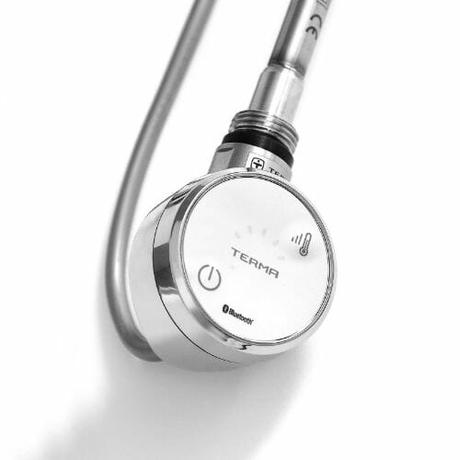
Benefits of a heating element
Before we dive into the technical stuff, let’s think about why you could benefit from an electric heating element.
- Lower energy consumption
Since heating elements are powered by the mains electricity and allow you to heat one radiator at a time, you have more control over your heating. More control means less energy wasted.
- Lower running costs
You might be thinking that electricity is more expensive than gas. But, since heating elements allow you to control individual radiators, you only heat the required rooms. This means that your energy consumption and cost is lower than heating the entire house unnecessarily with central heating.
- Easy to control
Our thermostatic heating elements feature Bluetooth technology. This means that you can easily adjust the temperature from a mobile or smart device. You can also program an unlimited amount of heat cycles to suit your routine.
- Ideal for summer heating
If we are lucky enough to have a hot summer in the UK, most of us will have the heating turned off. But, the bathroom can still be quite cold and uncomfortable. That’s why heating elements are perfect for bathrooms! You can keep the bathroom at your preferred temperature and enjoy warm towels without wasting heat on the rest of the house.
- Perfect for homes without central heating
Since central heating is so common in the country, it is easy to forget that some homes don’t have it at all! Therefore, heating elements are perfect for this situation since they are far more efficient than other types of electric heating such as fan heaters.
How do radiator heating elements work?
As we mentioned earlier, heating elements are hardwired into the mains. This must be carried out by a qualified electrician.
Once installed, the electric current flows from the mains through the element. Then, through the process of Joule heating, the element converts electrical energy into heat.
For more information about the types of elements and what they are made of, head to our guide ‘What are heating elements?’.
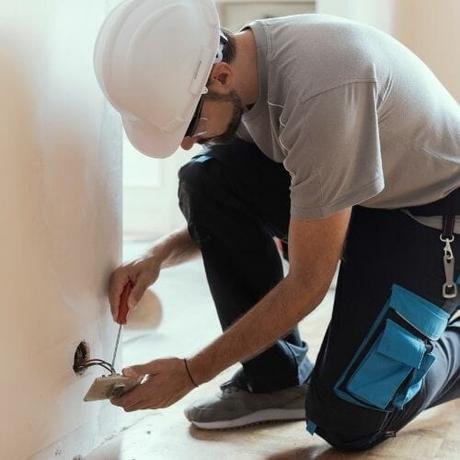
What is the difference between a radiator element and a towel rail element?
Radiator heating elements and towel rail heating elements are exactly the same. They are long metal rods that slide into the inlet of the radiator or rail.
So, whether you are looking to turn your existing radiator or towel rail into an electric heater, you can do so with any element in our collection.
The only decision you need to make is which type of element you want. You must also decide whether you want to create an electric radiator or a dual fuel radiator. More details on that coming up!
How do I choose a heating element?
There are two types of electric heating element in our range. Simple and thermostatic. You can probably guess that the difference between the two is given in the name!
Simple Heating Elements
Simple heating elements simply generate a heat output by converting electrical energy into heat. They are self-regulating elements.
This means that the temperature will rise to the max then regulate itself to maintain that temperature.
Please note that our simple elements are not available to purchase separately.
Thermostatic Heating Elements
Thermostatic heating elements provide greater control over your heating. You can tell them apart from simple elements since they feature a round control dial.
But you don’t have to control the element manually. These intelligent elements are equipped with Bluetooth technology. This makes it quick and easy to control the five temperature settings and other functions via the mobile or smart enabled device app.
Plus, if you would prefer to hide the dial to complement your decor, we also stock plenty of cable masking covers to disguise the element.
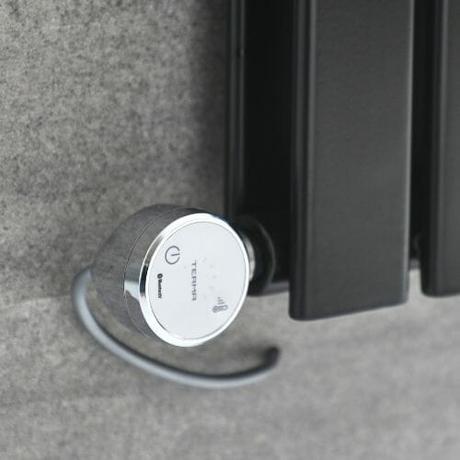
How to create a dual fuel radiator
If you want the option to be able to use your radiator with the central heating system, and as an independent electric radiator, dual fuel heating is what you need.
In order to turn your existing radiator into a dual fuel radiator you will need a heating element and an additional connection called a Dual Fuel T-Piece.
The Dual Fuel T-Piece connects a set of plumbed valves and an electric heating element to your radiator or heated towel rail and is suitable for 15mm (1/2″ BSP) inlets and valves.
For a quick and easy transition, the Milano Dual Fuel kit includes all you need to convert your radiator or towel warmer into a dual fuel setup.
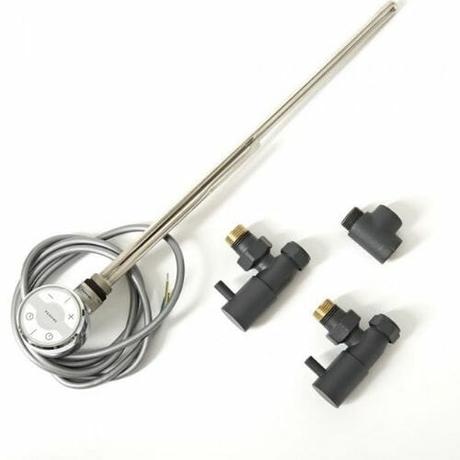
Can I add an external thermostat?
For further control over your heating, you can also add an external thermostat. This will provide greater control over the room temperature.
Our stylish Milano Connect Wi-Fi Thermostats allow you to create multiple zone heating to reduce energy usage and costs.
They are also suitable for new electric heating systems or can be retrofitted to existing systems, including underfloor heating.
Plus, our excellent quality thermostats are even compatible with Google Home and Amazon Alexa!
Please note: our external thermostats are only suitable for use with simple heating elements, not thermostatic elements.

How to calculate heating element size
If you have purchased central heating radiators or towel radiators before, you will know that you need to calculate the heat requirements using a BTU Calculator.
The good news is, working out the size of your heating element is just as easy. Simply use the BTU Calculator as normal and the results will provide the heat requirements in BTUs and Watts.
The Wattage provided will be the total needed to heat the room to a comfortable temperature. This means that one element might be sufficient.
Or, you could install multiple radiators with elements to add up to the total Wattage.
How hot does a heating element get?
As we mentioned earlier, the heat output of electric elements is measured in Watts. But if you are unfamiliar with electric heating, it can be difficult to imagine how much heat the element will provide.
So, let’s use our popular Milano Windsor 600mm x 1010mm double column radiator as an example. At Delta T50, this central heating radiator provides 3367 BTUs. This is equivalent to 987 Watts.
Therefore, the electric version of the same radiator is supplied with a 1200W heating element. This ensures that the element is capable of providing enough heat for the required space.
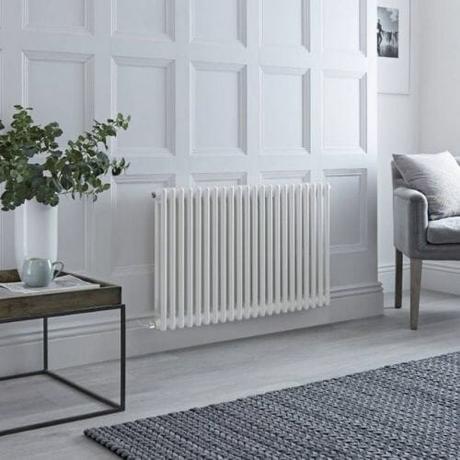
Are heating elements universal?
All of the radiators at BestHeating are suitable for use with a heating element from our range. In fact, most other radiators are also compatible with our electric elements.
This means that you should be able to transform your existing radiator or heated towel rail into an electric appliance.
The important requirement is that the radiator inlet is big enough for the element to slide in. All our radiators feature a ½” inlet, which is the same size as the elements.
In rare situations, the radiator body could be too small to fit an element. For example, if the radiator was 400mm wide and needed a 600W (460mm length) element to heat it correctly.
However, since the heating element is usually fed from the bottom inlet on heated towel rails and the side inlet on radiators, there should be enough space to fit the element.
Where can I install a heating element?
Another great benefit of electric heating elements is that you can install them virtually wherever you want. They are very popular in bathrooms because of the ability to heat the space in the summer when the heating is off.
However, if you want to install an electric element in the bathroom, you must take the safety considerations into account. This brings us to bathroom zones.
You may be aware of bathroom zones if you have purchased a new bathroom light for example. Any electrical device used in the bathroom must be installed in the correct zone.
Ranging from zone 0 to 2, these areas measure the distance from the water source to the electrical device.
Since both types of heating elements we stock at BestHeating are rated IPX4 and above, they are safe and suitable for installing in bathroom zone 1 and 2.
For more information on bathroom safety zones, please visit our guide ‘Can I Put An Electric Radiator In A Bathroom?’.

Radiators with heating elements
Planning on upgrading your entire radiator? All of our electric and dual fuel radiators and electric towel rails are supplied with excellent quality heating elements. This means that you do not have to purchase one separately.
Please note: Our electric radiators and towel rails are supplied with different elements. Some of them feature a simple Rotfil heating element.
Others are supplied with a Terma MOA Blue thermostatic heating element.
Please ensure that you check the product specification to find out which element is supplied with your preferred radiator.
For example, our Windsor electric radiators feature a simple Rotfil heating element.
However, our Alpha radiators are supplied with a Terma MOA Blue thermostatic heating element as you can see below.
Shop Heating Elements
We hope this guide has provided all the information you need to transform your heating into an efficient electric system. For more advice, get in touch with our team via [email protected].
Ready to find the perfect heating element for your radiator?
